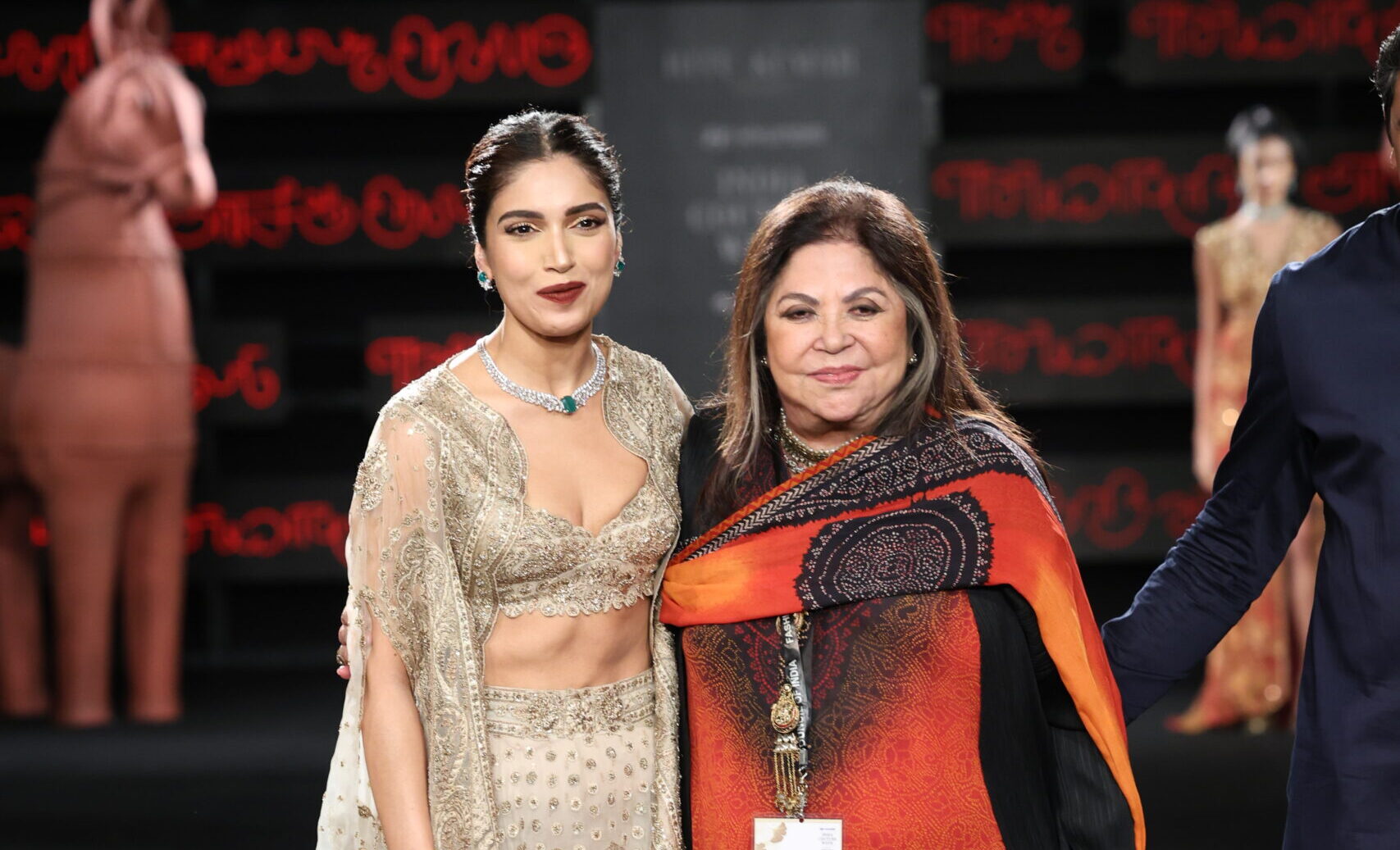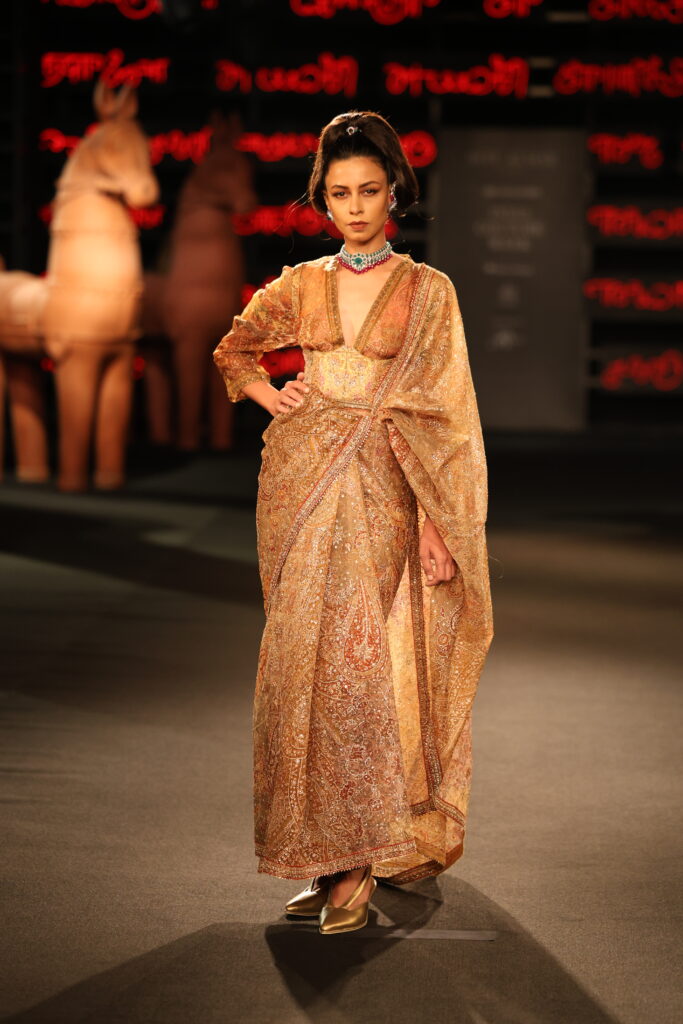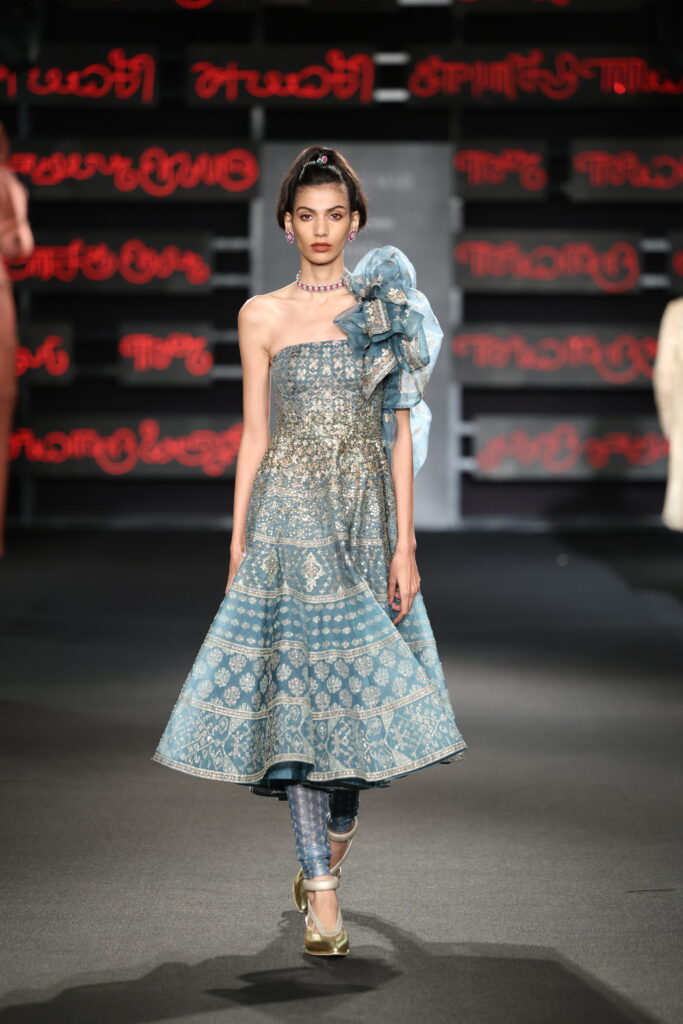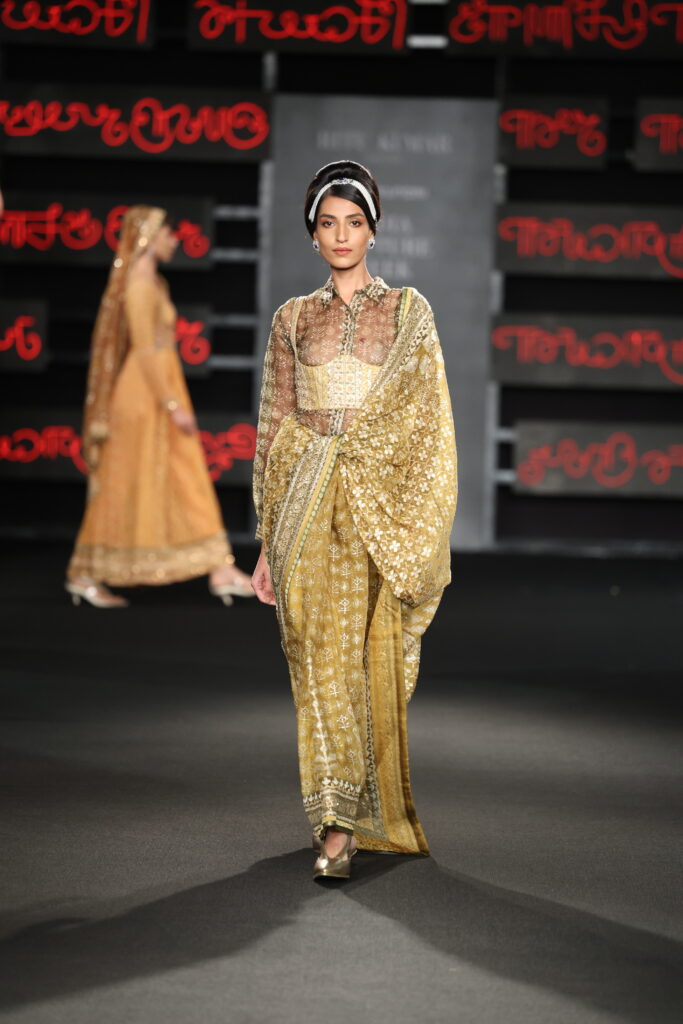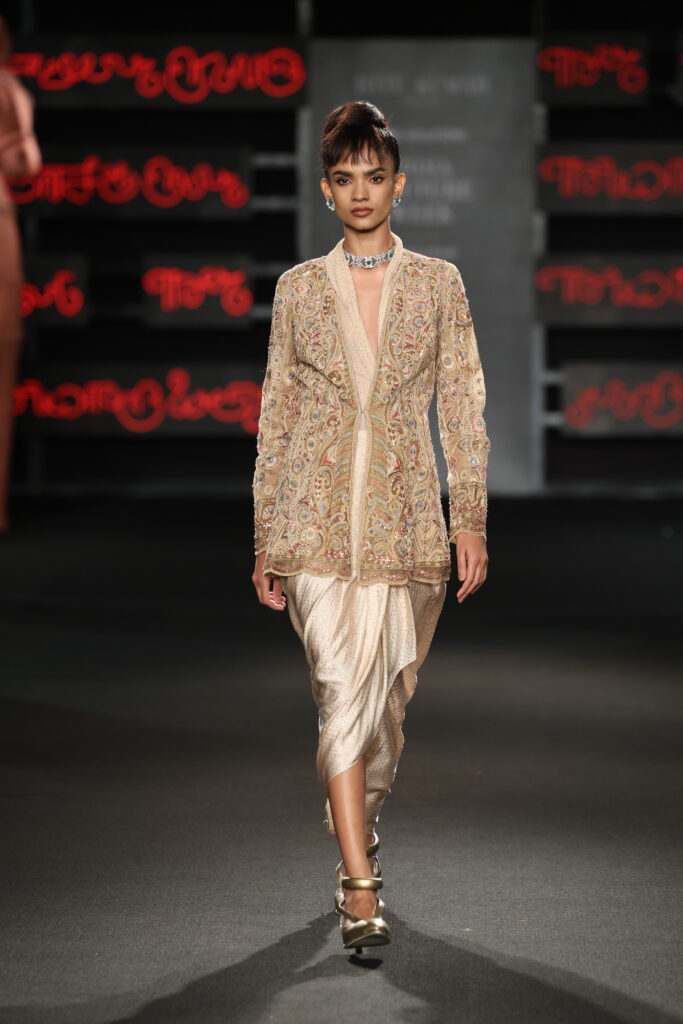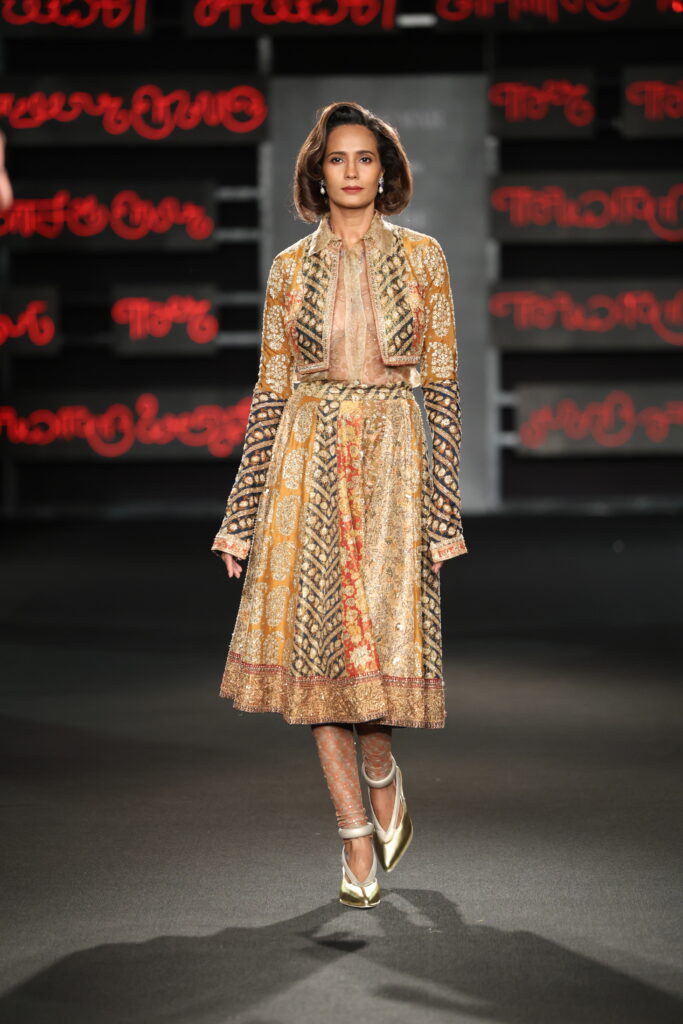No one can tell one bridal outfit from another. No one has time and dedication in this computer age for crafts, laments Ritu Kumar.
By Asmitaa Aggaarwal
In the 60s she was the first to do the classic ready-to-wear bridal, as traditional woven saris were the norm, now Ritu Kumar sees a huge change, due to the number of options available in couture.
“The palette is not structured anymore, Bengal they still wear red Banarasi, but D-Day hues have a new handwriting of pastels, shapes remain conventional, as Gen Z innovates. There is an introduction of beads, sequins, and pearls, we are doing Europe with a mix of India in couture renditions,” says Ritu.
When she began in Serampore (Calcutta), there were no books on crafts available, no one knew about the beauty of Machilipatnam to Ajrakh, but zardozi always found glory. “Not a page was written about Indian textiles, now there is huge awareness about crafts; we are one of the few countries who have retained our luxe heritage. I have worked with some outstanding people in this field-textile art historian Jasmeen Dhamija to Laila Tyabji, enriching my journey,” she adds, saying Martand Singh and people like him were the “barefoot doctors of craft—truly academic nourishers.”
In the 70s no one knew about India as for 200 years we were ruled by the British, colonised, they took the paisley and machine printed it on fabrics, sold it back to us, she explains. But true to her craft Ritu took the hand block print to the prestigious Pret-a-porter show in the 70s France, filling the vacuum which she has detailed in her book Costumes and Textiles of Royal India. She is ready for her new book, just finished editing, on contemporary India her journey from the 60s to now. “Our hand block print saris did so well that soon Surat and Banaras started abandoning polka dots and doing hand block prints,” she smiles, adding sequins never permeated into her aesthetic.
Interestingly she says, everything in bridal looks the same, can’t tell from the other, made in Farrukhabad or Bengal no one knows, which needs to change. Fashion, she says, must make a social impact, as we have an ingenious handwriting, it is alive on the ramp not in museums like other countries, it is being worn from Lajpat Nagar to Dilli Haat as well as couture week catwalks. “India is an engaging phenomenon, but what I would love to do most is revive the Kani shawl which no one has been able to as it is such a complex weave, like Chintz, my perennial favourite,” she admits. It is so special that it can never be copied!
In this computer world, she says no one has the patience for crafts, to understand its nuances, sit and learn. “I am a painter but I don’t know the vegetable dyes used to make paintings—I am just a catalyst, artisans are the showstoppers,” she says.
Rinku aka Sharmila Tagore whom Ritu knows since her Calcutta days wore the Begum of Bhopal’s joda, for her wedding to Pataudi wanted Kareena to do the same. Ritu took on the task, 5 months, contacting Mughal emperor Wajid Ali Shah’s old karigars, from Metiabruz (Calcutta) to repair the 300-year-old gold sequins one by one, and get the gold zari woven again that had got torn off. “It was worth the time, and dedication,” she signs off.

